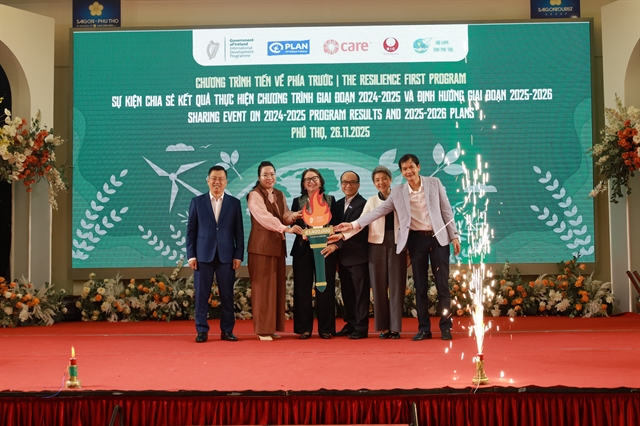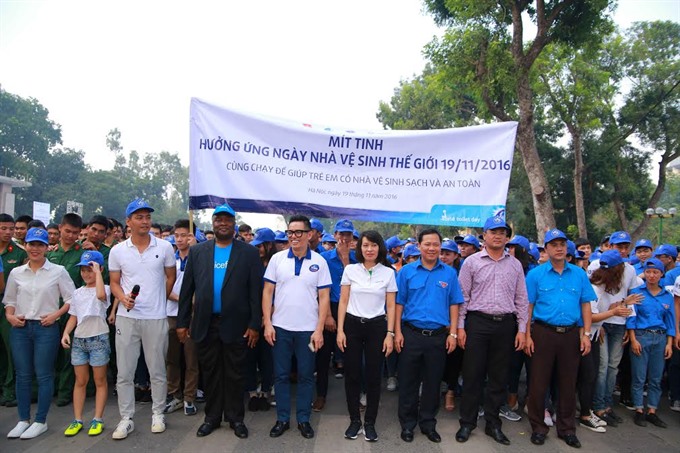 Society
Society

Only about 65 per cent of rural households in Việt Nam have standard toilets, said associate professor Nguyễn Thị Liên Hương, director of the Health Environment Management Agency under the Ministry of Health (MoH), addressing the challenges related to rural hygiene.
 |
| More than 3,000 students and representatives of various agencies and international organisations joined a race to call for hygienic toilets for children. — Photo Courtesy of the T&A Ogilvy |
HÀ NỘI — Only about 65 per cent of rural households in Việt Nam have standard toilets, said associate professor Nguyễn Thị Liên Hương, director of the Health Environment Management Agency under the Ministry of Health (MoH), addressing the challenges related to rural hygiene.
Speaking in Hà Nội on Saturday, Hương said that as of the end of 2015, more than five million people did not have hygienic toilets, especially in the northern mountainous provinces, the Central Highlands and Cửu Long (Mekong) Delta areas.
“Using hygienic toilets will help prevent epidemics such as diarrhoea, cholera, typhoid, hand-foot-mouth disease and improve living standards,” said Hương at the event marking World Toilet Day (November 19).
Hương proposed a concerted government and local effort to provide hygienic toilets to all and education on the importance of building and using standard toilets.
“Using hygienic toilets will help set up modern community and society,” she said.
Nguyễn Phi Long, chairman of the Việt Nam Central Youth Union, said his organisation would improve education it provides on personal hygiene to rural households, and spread information of the Party’s and State’s policies on environmental protection.
Friday Nwaigwe of the United Nations Children’s Fund (UNICEF) said hygienic toilets were very necessary in preventing dangerous disease. More than 800 children die in the world every day due to using dirty water and bad hygienic conditions.
One third of health-related fatalities among Vietnamese children are caused by diarrhoea and parasite infections, Newaigwe said, adding that with help from UNICEF, diarrhoea epidemics have been stemmed in more than 400 villages.
Trần Vũ Hoài, deputy chairman of the Unilever Việt Nam Fund, said that the fund, in co-ordination with the MoH , had set a goal to provide improved hygienic conditions to some 10 million Vietnamese people by the end of 2018.
So far more than four million people across the country have benefited from the programme.
In the meeting, more than 3,000 participants took part in a run to call for hygienic toilets for children. — VNS